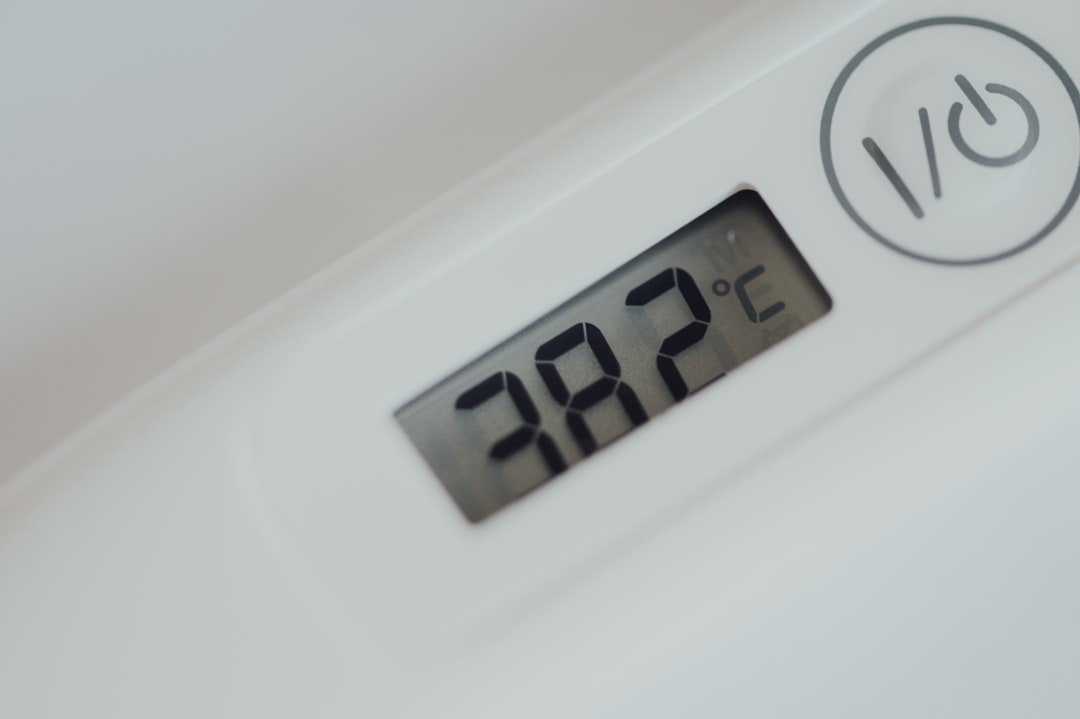Why the Air Inside Matters More Than You Think
Better indoor air quality improves your health, energy levels, and overall well-being. The three most effective strategies for cleaner air are:
- Source Control – Remove or reduce pollution at its origin by choosing low-VOC products and regular cleaning.
- Proper Ventilation – Increase fresh outdoor air circulation through natural or mechanical ventilation.
- Air Filtration – Use filters and air purifiers to remove particles and contaminants.
The air inside your home is likely more polluted than you realize. Americans spend 90% of their time indoors, where pollutant levels are often two to five times higher than outdoors.
This invisible problem affects your family’s health daily. Poor indoor air quality can cause eye irritation, headaches, dizziness, and asthma, and is linked to long-term respiratory and heart disease.
Common indoor pollutants include:
- Dust, pollen, and pet dander (PM2.5)
- Volatile organic compounds (VOCs) from furniture, paint, and cleaning supplies
- Carbon dioxide from poor ventilation
- Radon gas (the second leading cause of lung cancer)
- Combustion byproducts from gas stoves and heating systems
The good news is you have control over your indoor environment. Simple changes to how you clean, ventilate, and filter your home’s air can make a measurable difference.
The Unseen Threats: Identifying Common Indoor Air Pollutants
Invisible threats are floating through your home right now. Understanding what you’re breathing is the foundation of achieving better indoor air quality.
Poor indoor air quality creates immediate symptoms like eye irritation, headaches, dizziness, and “brain fog.” Some people experience sick building syndrome—feeling unwell indoors but better the moment they step outside.
Long-term, polluted indoor air can trigger asthma, worsen respiratory conditions, and contribute to heart disease. Pollutants like radon don’t cause immediate symptoms but can lead to cancer years later.
So what are you breathing? Particulate matter (PM2.5) are tiny particles from dust, pollen, pet dander, mold, and smoke that lodge deep in your lungs. Volatile Organic Compounds (VOCs) are gases from everyday items like new furniture or fresh paint. Biological pollutants include mold, dust mites, bacteria, and viruses that thrive in humid conditions.
Combustion pollutants come from burning fuel in gas stoves, furnaces, or fireplaces. Finally, radon is a naturally occurring radioactive gas that seeps up from the ground; it’s odorless and invisible, making it particularly dangerous.
Warning signs like persistent odors, condensation on windows, or health symptoms that improve when you leave home are red flags. For detailed guidance, see our resources on Poor Indoor Air Quality Signs and How to Measure Indoor Air Quality.
The Dangers of Specific Pollutants
While no indoor pollutant is welcome, some pose particularly serious health risks that demand immediate attention.
Radon is a silent killer. This radioactive gas enters homes through cracks in the foundation. Since it’s undetectable by your senses, testing is the only defense. Radon is the second leading cause of lung cancer in the U.S., making home testing essential. You can order a radon test kit to protect your loved ones.
Carbon monoxide (CO) is another invisible threat. This odorless gas results from incomplete combustion in faulty furnaces, water heaters, and gas stoves. Symptoms mimic the flu, but high concentrations can be fatal. Installing CO detectors on every level of your home is essential for your family’s safety.
Particulate matter’s effects are very real. These microscopic particles bypass your body’s defenses, penetrating deep into your lungs and even your bloodstream. This can trigger respiratory irritation, worsen asthma, and increase your risk of stroke and heart attack. The EPA provides comprehensive information on the health and environmental effects of particulate matter (PM).
Understanding Volatile Organic Compounds (VOCs)
Volatile Organic Compounds deserve special attention in any discussion of better indoor air quality. These chemicals evaporate at room temperature, releasing gases into your air. Surprisingly, indoor VOC levels can be two to five times higher than outdoors.
Your home is full of VOC sources. Building materials and furnishings like new carpets, upholstery, and engineered wood products release formaldehyde and benzene. Paints and solvents also emit VOCs, along with varnishes and adhesives.
Cleaning supplies are a daily source of VOCs. Many cleaners, disinfectants, and air fresheners can cause eye, nose, and throat irritation, headaches, and breathing difficulties. Personal care products like sprays and perfumes, and hobby supplies like glues and aerosols, also release VOCs.
The health effects range from short-term discomfort like eye irritation, headaches, and nausea to long-term organ damage and increased cancer risk from certain VOCs.
Understanding VOCs helps you make informed choices about the products you bring into your home. The EPA offers detailed information about Volatile Organic Compound’s Impact on Indoor Air Quality. The good news is that reducing VOC exposure often comes down to making smarter product choices.
A Three-Pronged Approach for Better Indoor Air Quality
Achieving better indoor air quality doesn’t require a complete home overhaul. A strategic three-part plan can tackle the problem from every angle.
The most effective approach combines source control, proper ventilation, and air filtration. They work together: source control stops pollutants from entering your air, ventilation dilutes and removes what’s there, and air filtration catches whatever remains.
Source control is typically the most cost-effective strategy because preventing pollution is easier than cleaning it up. Ventilation is next in effectiveness, with air filtration serving as your final safety net.
Strategy 1: Source Control and Regular Maintenance
Source control means stopping pollution before it starts by eliminating or reducing pollutants at their origin.
Choosing low-VOC products is a smart move. When painting or buying new furniture and cleaning supplies, look for low-VOC or zero-VOC labels. That “new furniture” smell comes from chemicals off-gassing into your air.
Your cleaning routine is key. Dusting with damp cloths traps dust instead of launching it into the air. HEPA vacuum cleaners are also essential. Unlike regular vacuums, HEPA filters trap 99.97% of particles like dust mites, pet dander, and pollen. Vacuum high-traffic areas, rugs, and upholstery at least twice a week.
Your gas stove releases nitrogen dioxide and other byproducts. Always use your range hood when cooking, ensuring it vents outside. If you don’t have one, crack a window. Studies show children in homes with gas stoves have a 20% higher risk of respiratory problems.
A simple, effective habit is taking shoes off at the door. A good doormat and a no-shoes policy dramatically reduce the outdoor pollutants tracked into your living space.
Harvard Health offers additional practical tips in their guide on Easy ways you can improve indoor air quality – Harvard Health.
Strategy 2: Effective Ventilation for Better Indoor Air Quality
Ventilation is your home’s breathing system, bringing in fresh air and pushing out stale, polluted air. Without it, any home can become stuffy and unhealthy.
Natural ventilation—opening windows and doors—is great when outdoor air quality is good. Just be mindful of pollen, smoke, or heavy pollution.
Mechanical ventilation offers more control. Use exhaust fans in bathrooms and kitchens to remove moisture and fumes at the source. Run them during and after showers and while cooking.
Modern, energy-efficient homes are built tightly, which can trap stale air. Whole-house ventilation systems solve this by providing a controlled, consistent exchange of fresh air. Unlike a standard HVAC system that recirculates air, these systems are designed to bring in fresh outdoor air. Learn more about implementing a Whole House Ventilation System for your home.
Energy Recovery Ventilators (ERVs) are ideal for the Pacific Northwest climate. They exchange heat and humidity between incoming fresh air and outgoing stale air, so you get fresh air without losing your comfortable indoor temperature. ERVs can recover about 70% of the energy from outgoing air, making them both healthy and efficient.
When indoor CO2 levels rise above 1,000 parts per million, cognitive function declines. Proper ventilation keeps CO2 levels in check and your mind clear.
The Department of Energy provides comprehensive information about Energy Saver: Whole-House Ventilation systems and their benefits.
Strategy 3: Air Filtration and Purification
Air filtration is your final line of defense, capturing particles and contaminants that source control and ventilation miss.
HEPA filters are the gold standard, capturing at least 99.97% of particles down to 0.3 microns, including dust, pollen, and mold spores. The EPA provides detailed information about What is a HEPA filter?.
For your HVAC system, MERV ratings indicate filter effectiveness. Higher ratings mean better filtration. Upgrading to a MERV-13 filter and changing it every 1-3 months is a simple way to improve your whole-house air quality.
Activated carbon filters handle gases and odors like VOCs, which HEPA filters cannot. For comprehensive cleaning, look for systems that combine both HEPA and activated carbon filtration.
You have two main options: portable air cleaners for specific rooms or whole-house systems integrated with your HVAC. Portable units are great for problem areas like bedrooms. Check the Clean Air Delivery Rate (CADR) to ensure it’s sized correctly for the room.
Whole-house systems treat all the air circulating through your ducts, providing consistent better indoor air quality throughout your home. They integrate with your existing HVAC setup for convenient and effective air treatment.
Beyond the Home: IAQ in Schools and Workplaces
Air quality matters beyond the home. We spend countless hours in schools and offices, where the air can be even more challenging to manage.
The stakes are high in these environments. Poor better indoor air quality causes headaches and fatigue. In schools, it can trigger asthma and affect focus, leading to more missed days. In offices, high CO2 levels (above 1,000ppm) impair cognitive function, contributing to afternoon sluggishness.
Schools and workplaces face unique challenges. Poor ventilation is common in older buildings not designed for fresh air. High occupancy leads to more CO2, allergens, and the spread of respiratory infections like colds and flu, especially in winter.
These environments also have a chemical cocktail from industrial cleaning products, copy machines, art supplies, and office furniture, all contributing VOCs to the air. Moisture problems can lead to mold, while pest issues add allergens. Outdoor pollution from idling buses or nearby parking garages can also be pulled inside.
The solutions require a more systematic approach. Improved ventilation and filtration are non-negotiable, including upgrading HVAC systems with higher MERV filters and ensuring adequate fresh air intake. Professional-grade systems from Daikin are designed for these demanding commercial environments.
Source control policies are crucial. Scent-free workplace policies, switching to low-VOC cleaning products, and avoiding ozone-producing air cleaners can make a dramatic difference. Regular professional maintenance is also vital for fixing leaks, addressing mold, and managing pests.
As individuals, advocacy matters. Contact your school board or building management about air quality concerns. Supporting legislation like the Indoor Air Quality and Healthy Schools Act can also drive systemic improvements.
Here’s how air quality challenges differ between home and institutional settings:
| Feature | Home Setting | Office/School Setting |
|---|---|---|
| Primary Goal | Family health & comfort | Occupant health, productivity, learning |
| Ventilation | Natural (windows), exhaust fans, ERVs | Mechanical HVAC systems, outdoor air intakes, ERVs |
| Filtration | HVAC filters (MERV-8/13), portable HEPA purifiers | Centralized HVAC filtration (higher MERV), specialized purifiers |
| Humidity Control | Dehumidifiers/humidifiers, bathroom fans | Integrated HVAC humidity control, building management |
| VOC Sources | Furniture, paint, cleaning products | Office equipment, cleaning chemicals, building materials |
| Common Allergens | Dust mites, pet dander, mold, pollen | Dust, mold, pest allergens, pollen, human dander |
| Maintenance | DIY cleaning, filter changes, leak repair | Professional cleaning, scheduled HVAC maintenance, pest control |
| Key Solutions | Source control, daily habits, proper appliance use | Policy implementation, system upgrades, professional oversight |
Whether you’re looking to Improve Office Indoor Air Quality or want to learn more about school environments, the EPA offers excellent guidance on Creating healthy indoor school environments. With the right systems and policies, these shared spaces can achieve excellent air quality.
Frequently Asked Questions about Improving Indoor Air
Here are answers to the most common questions homeowners have about achieving better indoor air quality.
How can I effectively control humidity for better indoor air quality?
Controlling humidity is key to your home’s health. Too much moisture invites mold and dust mites; too little causes dry throats and static.
The ideal range is 30-50% indoor humidity.
When humidity is above 50-60%, mold, mildew, and dust mites thrive. Dehumidifiers are essential, especially in damp areas like basements and bathrooms. Proper ventilation is also crucial. Use kitchen and bathroom exhaust fans during and after cooking or showering to vent moisture outside. Fix any leaks immediately to prevent mold.
When humidity drops below 30%, the air becomes uncomfortably dry. Humidifiers can help; evaporative models are often better than ultrasonic ones as they don’t release minerals into the air.
For whole-house control, consider integrating a humidity system with your HVAC for a set-it-and-forget-it solution that keeps your entire home comfortable.
Do houseplants actually improve indoor air quality?
While houseplants look great, there’s no evidence that a reasonable number can significantly remove pollutants in homes and offices. The famous NASA study was conducted in sealed lab chambers, which is very different from a typical living space.
In fact, houseplants can sometimes worsen air quality. They collect dust, and their soil can grow mold if overwatered, which is bad for allergy sufferers.
Plants are wonderful for mental health and aesthetics, but don’t rely on them to clean your air. Your energy is better spent on source control, proper ventilation, and effective filtration.
What is the most important first step I can take?
If you’re wondering where to start, source control is your most powerful tool for achieving better indoor air quality.
It’s easier to prevent pollution than to remove it after it’s in your air. Source control means proactively eliminating pollutants at their origin.
The solutions are simple. Taking your shoes off at the door prevents tracking in outdoor pollutants. Dusting with a damp cloth traps particles instead of spreading them.
Ventilating when you cook or clean by opening a window or using an exhaust fan removes fumes and moisture before they build up. When shopping, choosing low-VOC products like paints, cleaners, and furniture reduces chemical emissions from the start.
These are simple, inexpensive habits that become second nature and create a strong foundation for all other air quality efforts.
Conclusion: Breathe Easier with a Healthier Indoor Environment
The journey to better indoor air quality is manageable. We’ve covered the invisible threats in our homes, from VOCs to radon, and provided a clear roadmap to cleaner, healthier air.
Remember the three-pronged approach: Source Control tackles pollution at its origin, Effective Ventilation brings in fresh air, and Air Filtration captures what’s left. These strategies work best together to protect your family’s health.
You can start small. Taking off your shoes at the door, switching to low-VOC cleaning products, installing a bathroom exhaust fan, or upgrading to a HEPA vacuum are all great first steps. Every improvement builds on the last.
The long-term benefits are worth the effort: reduced respiratory problems, fewer headaches, better sleep, and sharper thinking. In our Pacific Northwest climate, where we’re sealed indoors for months, these improvements can transform how you feel at home.
Taking control of your indoor environment is one of the most empowering things you can do for your family’s health. You can’t control the air quality outside, but you can influence what you breathe at home.
For those ready to take the next step with professional assessment and advanced HVAC solutions, the experts at Daikin Seattle understand the unique challenges of our Pacific Northwest climate. Our Experience Center in Seattle lets you see and touch the technology that could transform your home’s air quality. We’re here to help you implement the best Indoor Air Quality Solutions in Seattle custom to your specific needs.
Your home should be a sanctuary where every breath supports your health. With the right strategies, that’s exactly what it can become.










